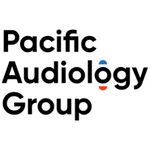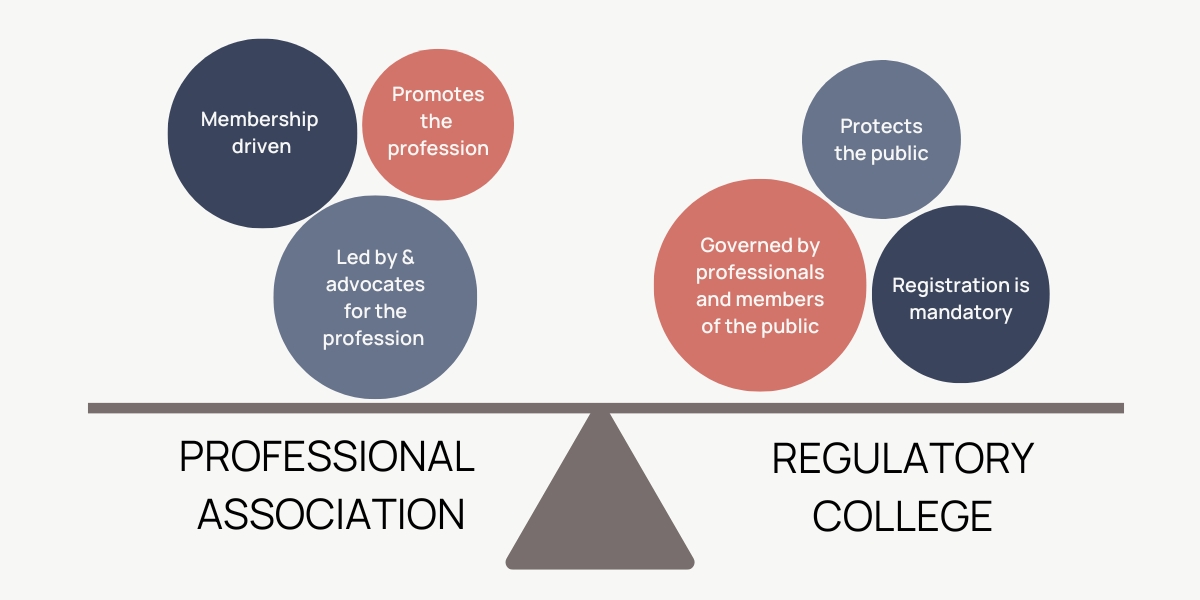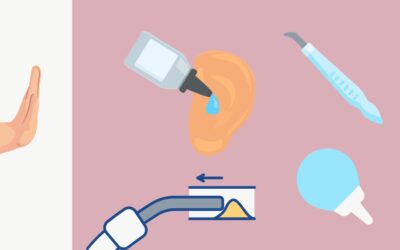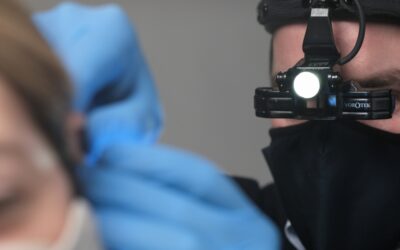In Canada, health care administration and the regulation of health professions is a provincial jurisdiction. Across the provinces and territories, the very different roles of regulator and professional association can often be misunderstood by patients/clients (i.e., the public), college registrants, and association members. Historically, regulators sometimes undertook duties on behalf of professional associations, further contributing to the confusion. However, this is increasingly rare, and a legacy of the past, and provincial governments (i.e., ministries of health) across Canada continue to implement legislation and policies that establish and/or add role clarity for regulatory authorities in the interest of good governance, avoidance of inherent conflicts of interest, and fair and impartial protection of the public.
In some cases, when a profession was previously unregulated, a professional association may have existed prior to the establishment of the regulatory authority (i.e., a “college”). Such was the case in British Columbia, where hearing instrument dispensing had been regulated under a different entity, and a different provincial statute, while the professions of audiology and speech-language pathology were unregulated until the College of Speech and Hearing Health Professionals of British Columbia (CSHBC) was established in 2009 under the Health Professions Act, with a mandate to regulate all three professions under one regulatory umbrella. The term “college” further adds to the confusion, as regulators are not post-secondary education institutions.
Health regulators (“colleges”), operate under, and derive their authority from, provincial law – in British Columbia, the Health Profession Act – and are precluded from straying beyond their statutory mandate. For example, BC’s Health Professions Act is noticeably silent on issues such as access to services, human resources, and service delivery, as jurisdiction over those issues rests solely with the BC Ministry of Health.
Key characteristics of a health regulator:
- Registration and payment of a registration (or licensing) fee are mandatory and legal requirements to practise the profession(s).
- Only those registered with a regulator are licensed to practise within the scope of practice set by government – to do otherwise would constitute unlawful practice, subject to legal action.
- Only those registered with a regulator may use a restricted title set by government (e.g., “audiologist”, “hearing instrument practitioner”, or “speech-language pathologist”) – to do otherwise would constitute unlawful use of a restricted title, subject to legal action.
- “Registrant” or “licensee” refers to those licenced and regulated by the regulator.
- Regulators are accountable to government (a minister and/or ministry of health) and the general public – its constituents are members of the general public.
- Regulators must be neutral, act fairly and impartially, and refrain from professional advocacy, in the public interest.
Regulators are governed by a board made up of both elected registrants and government-appointed public representatives, and typically have at least four statutory committees (registration, quality assurance, inquiry, and discipline) that support a college’s mandate in specific areas.
In BC, a regulator’s mandate under the Health Professions Act and associated regulations includes:
- setting registration standards for entry-to-practice licensure as well as higher-risk certification;
- ensuring professional and clinical practice standards are maintained through enforcement of a college’s quality assurance program;
- investigating complaints alleging clinical incompetence and/or professional misconduct; and
- when necessary, taking disciplinary action where complaint investigations cannot be resolved by consent.
In summary, regulators have a legal mandate to protect the public’s right to safe, ethical, and competent care.
Key characteristics of a professional association:
- Membership is optional.
- “Member” refers to those the association acts to support and advocate for.
- Professional associations are accountable to their members.
- Associations advocate for the profession(s) and acts in the interest of their members.
- Associations may advocate for issues that impact the professions, provide opportunities for practitioners to engage in policy development, provide education and professional development opportunities, and provide networking opportunities.
More information about CSHBC’s regulatory role in BC, and the difference between regulators, professional associations, and labour unions, is available on the CSHBC website.





